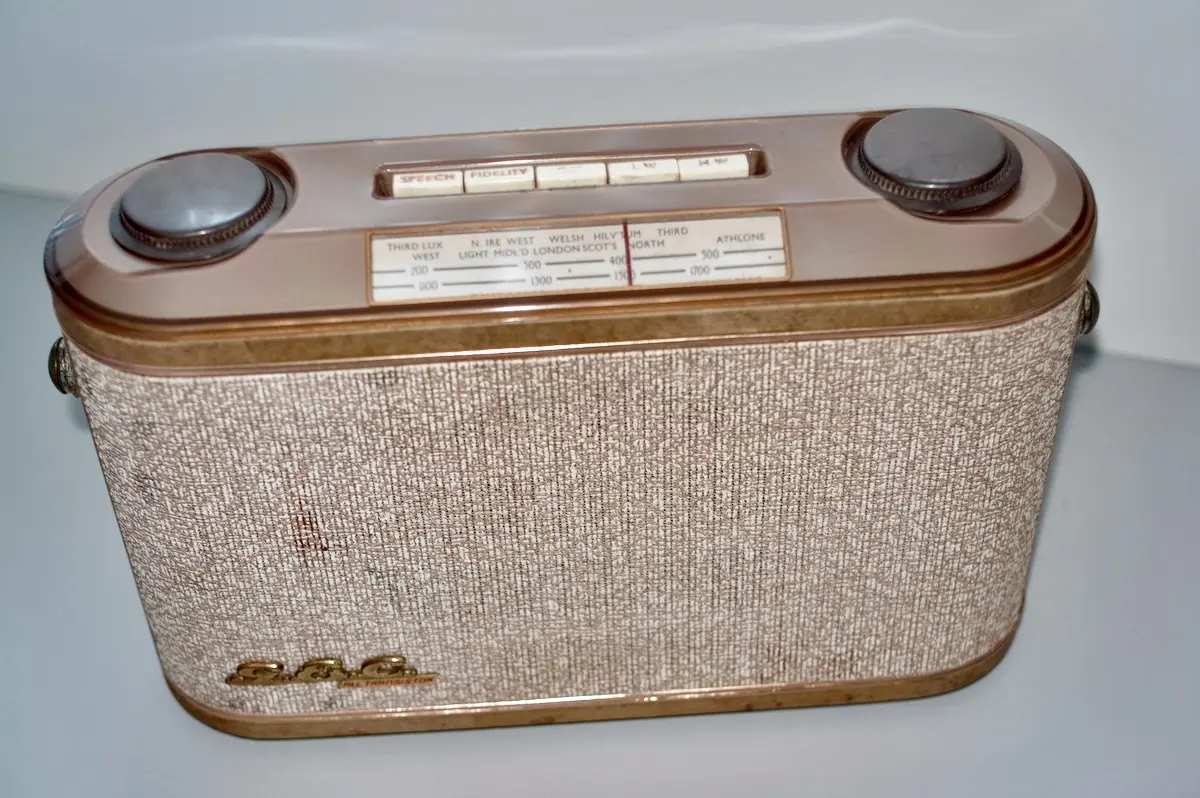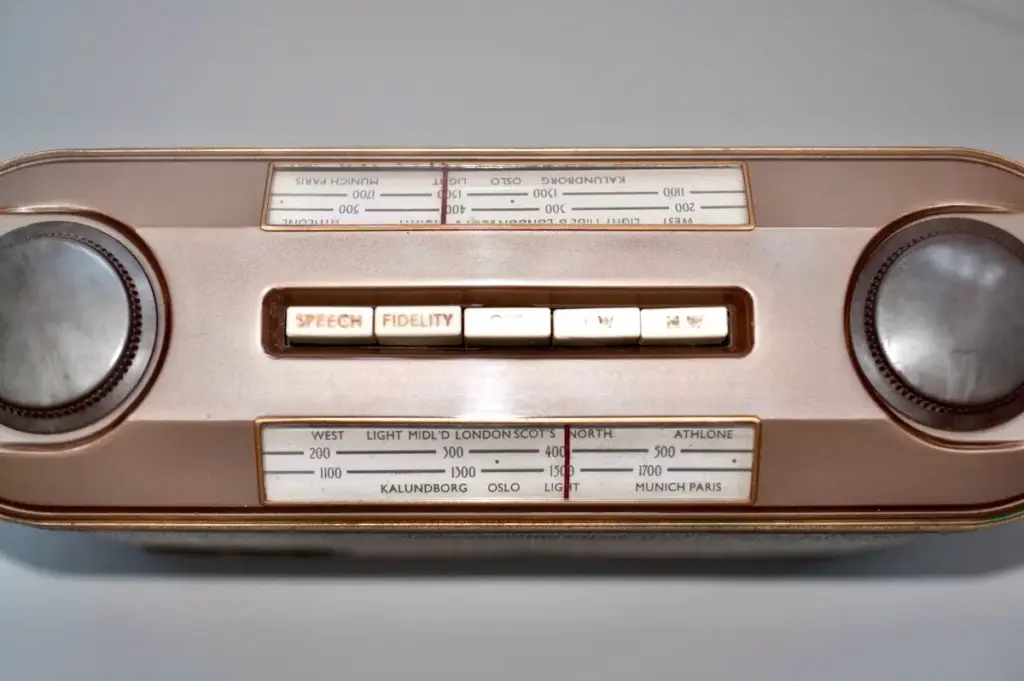The attractive GEC BC561 Transistor Radio set from 1960
The GEC BC561 featured here is a Medium and Long wave radio made in 1960 and was one of the very first transistorised radios that GEC made. It provided good quality sound and could be used in the home or out on trips and had the added bonus of being very easy to service.
My GEC BC561 Transistor Radio
I bought my copy of the BC561 because I liked the look of it. It has a distinctive, rounded look with dual tuning gauges and large controls which I found appealing, and since the model I found on eBay was advertised as working, I bought it for only a few pounds to add to my collection.
When it arrived a few days after the sale ended, I found a very neat radio that did, as advertised work well, and only needed a bit of a clean up to remove some dirt from the tuning scales and case to look pretty good. I did find that one of the screws that held the top panel down was missing and had left some of its thread in the pillar it screws into, but overall, not bad.
As is common with sets this old, the markings on the push buttons that control the band changing and tone controls have lost most of their definition and would need to be re-inked to be easily read.
I found that the sound quality of the BC561 was really quite good for an AM set – the only problem is that there is almost nothing now transmitted on the Medium Wave or Long Wave that is worth listening to.
Pictures of the GEC BC561 Transistor Radio
The small gallery below shows some pictures of my BC561 radio.
Description of the GEC BC561 Radio
The GEC BC561 is very typical of many early transistorised radio sets which follow a very standard electronic design.
The set uses 6 transistors in a Superhet design with a GET874 transistor as a mixer/oscillator, two stages of IF amplification using GET873 transistors and then a GEX11 diode providing the audio signal detection. The audio stages consist of a GET114 transistor driving a pair of GET114 transistors to provide output to the loudspeaker.
The most noticeable thing about the design of this set is just how easy it is to get access to the electronics to work on it. Once the two knobs are pulled off (the volume knob and the tuning knob) there are two screws that hold the top panel in place. With these removed and the panel lifted off there are two more bolts to remove and the whole chassis lifts out.
The electronics aside, the case of the radio is made from plywood, with a plastic top panel and plastic push on knobs. A feature of the set is the two tuning scales which make it easy to tune the radio from either the front or the back. There is a set of 5 push buttons that control the wave band the radio is tuned to, and instead of a tone control, there are two buttons marked Speech and Fidelity that set a filter to emphasise speech or music.
The manufacturing of this radio is interesting in that the set uses a PCB to hold all the electronics. This set was only made a couple of years after the Ever Ready Sky Leader, and the difference in manufacturing is quite pronounced. The Ever Ready used a metal chassis with the transistors mounted above and the other components under mounted on tag boards. How much cheaper it must have been to make this set with its PCB that the discrete wiring of the Sky Leader.
GEC BC561 Specifications and Circuit
- GEC BC561 6 transistor radio
- Manufactured in 1960
- Uses GET series of transistors (GET874, GET873, GET114)
- Covers Medium Wave (187-550M) and Long Wave (1130-1850M)
- External Aerial Socket (marked Car Aerial socket on circuit)
- Two tone switches marked Speech and Fidelity
- Powered from single 9V battery
- PCB construction technique
- Easy access to the chassis for servicing

Discover more from Everything Vintage
Subscribe to get the latest posts sent to your email.























